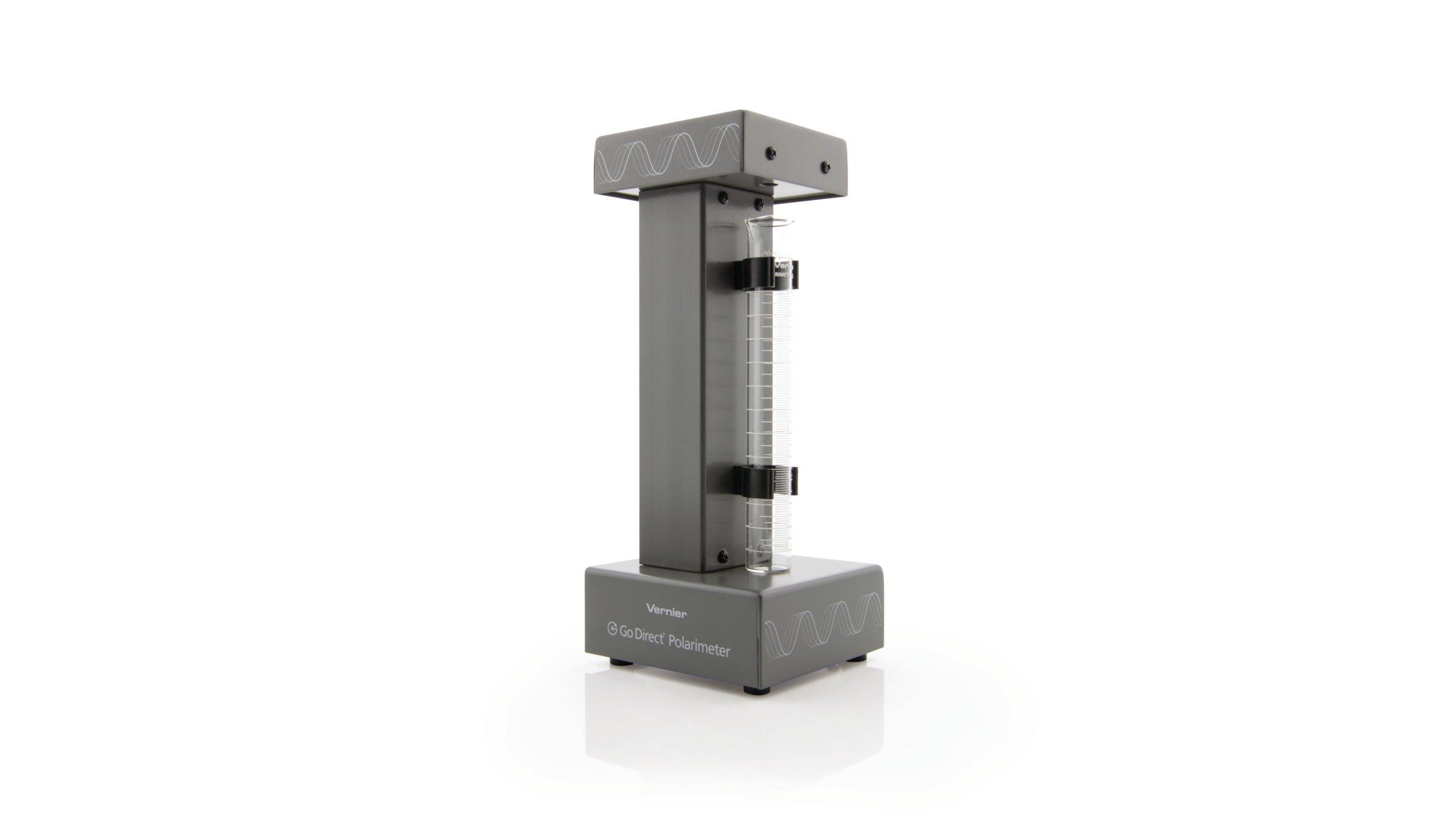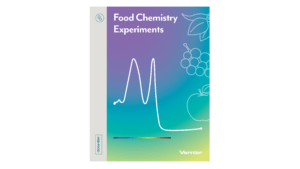Using Polarimetry to Identify Sugar and Sweeteners in Beverages
Experiment #13 from Food Chemistry Experiments
- Subject
- Chemistry
Introduction
Food chemists must be able to differentiate between various types of sugars in food and beverages. Because sugars can have similar chemical structures and properties, this can often be tricky. Luckily, sugars are chiral molecules that exhibit optical activity. These are easily measured with a polarimeter.
A polarimeter is an instrument designed to detect changes in rotation of plane-polarized light in the presence of an optically active compound. The Go Direct Chemical Polarimeter uses a light sensor and a bidirectional optical encoder to detect the quantity of light passing through the sample at each angle as the analyzer is rotated. A graph is produced that shows clear changes in the light’s polarization with respect to angle. Specific rotation is a property that can be used to identify chemical compounds that behave this way.
A compound will consistently have the same specific rotation under identical experimental conditions. To determine the specific rotation of the sample, use Biot’s law:
α = [α] ℓ c
where α is the observed optical rotation in units of degrees, [α] is the specific rotation in units of degrees (the formal unit for specific rotation is degrees dm-1 mL g-1, but scientific literature uses just degrees), ℓ is the length of the cell in units of dm, and c is the sample concentration in units of grams per milliliter.
Objectives
- Calculate the specific rotation of sugars using a polarimeter.
- Identify common sugars and artificial sweeteners in everyday beverages.
Sensors and Equipment
This experiment features the following sensors and equipment. Additional equipment may be required.
Ready to Experiment?
Ask an Expert
Get answers to your questions about how to teach this experiment with our support team.
- Call toll-free: 888-837-6437
- Chat with Us
- Email support@vernier.com
Purchase the Lab Book
This experiment is #13 of Food Chemistry Experiments. The experiment in the book includes student instructions as well as instructor information for set up, helpful hints, and sample graphs and data.


